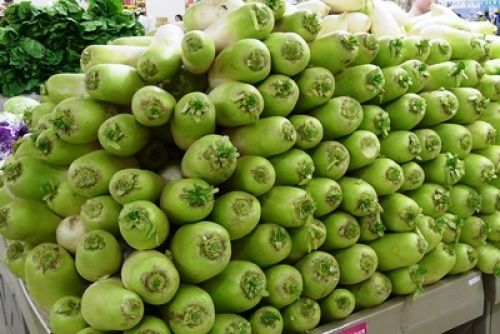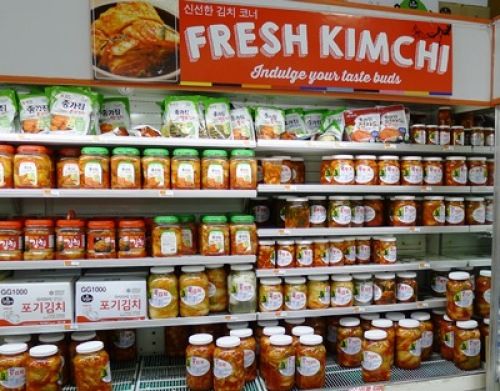
Last Saturday I jumped at the chance to take an organized tour of one of the largest Asian grocery stores you can imagine. Almost Vegan Cooking School billed the tour as “a culinary adventure and cultural immersion that will make your head spin.”
The tour didn’t disappoint.
We walked through the entire store, from the home shopping section to the fresh bakery. We stopped to learn about wasabi powder, compared packages of seaweed and stood spellbound in front of the long shelves lined with hundreds of packets of different kinds of dried mushrooms.
When we stepped into the enormous fresh produce section, I felt like I had been transported to another country. Here the group learned how to choose a ripe persimmon, which tofu makes the best soup and how to use Korean peppers instead of jalapenos for appetizing poppers.
It was about the time we stopped to admire the bins of Indian bitter melons, banana flowers and fuzzy squashes that it occurred to me I should try to grow some of these vegetables in my own garden.
I liked the idea of growing perilla or what’s called sesame leaves next season. This leafy green isn’t related to the sesame plant, but the large leaves can be eaten raw or cooked and served as a side dish.
While kohlrabi might not be considered an exotic root vegetable to some gardeners, I’ve never grown it in my garden. But the stacks of purple kohlrabi seemed to encourage me to plant some in my vegetable bed.
If I plant enough kohlrabi, I probably won’t have room for any Korean radishes because these radishes are huge. These giant vegetables, with their smooth white skin with light green shoulders, are used in making kimchi, the spicy pickled cabbage condiment.
Industrious gardeners could grow almost all the ingredients for kimchi if they plant enough cabbages, radishes, green onions, red peppers and garlic.
After the tour, the group gathered at a Korean restaurant to enjoy a dish called Bi Bim Bop. A dish of sizzling rice was served in its stone cooking pot, topped with sauteed and seasoned vegetables and served with a chili pepper paste called gochujang.
It was fun to step outside my typical grocery store shopping to experience something new at the Asian market. The vast variety of fresh vegetables has inspired me to expand my planting options next season.






















Comments
Log in or create an account to post a comment.
Sign up Log in